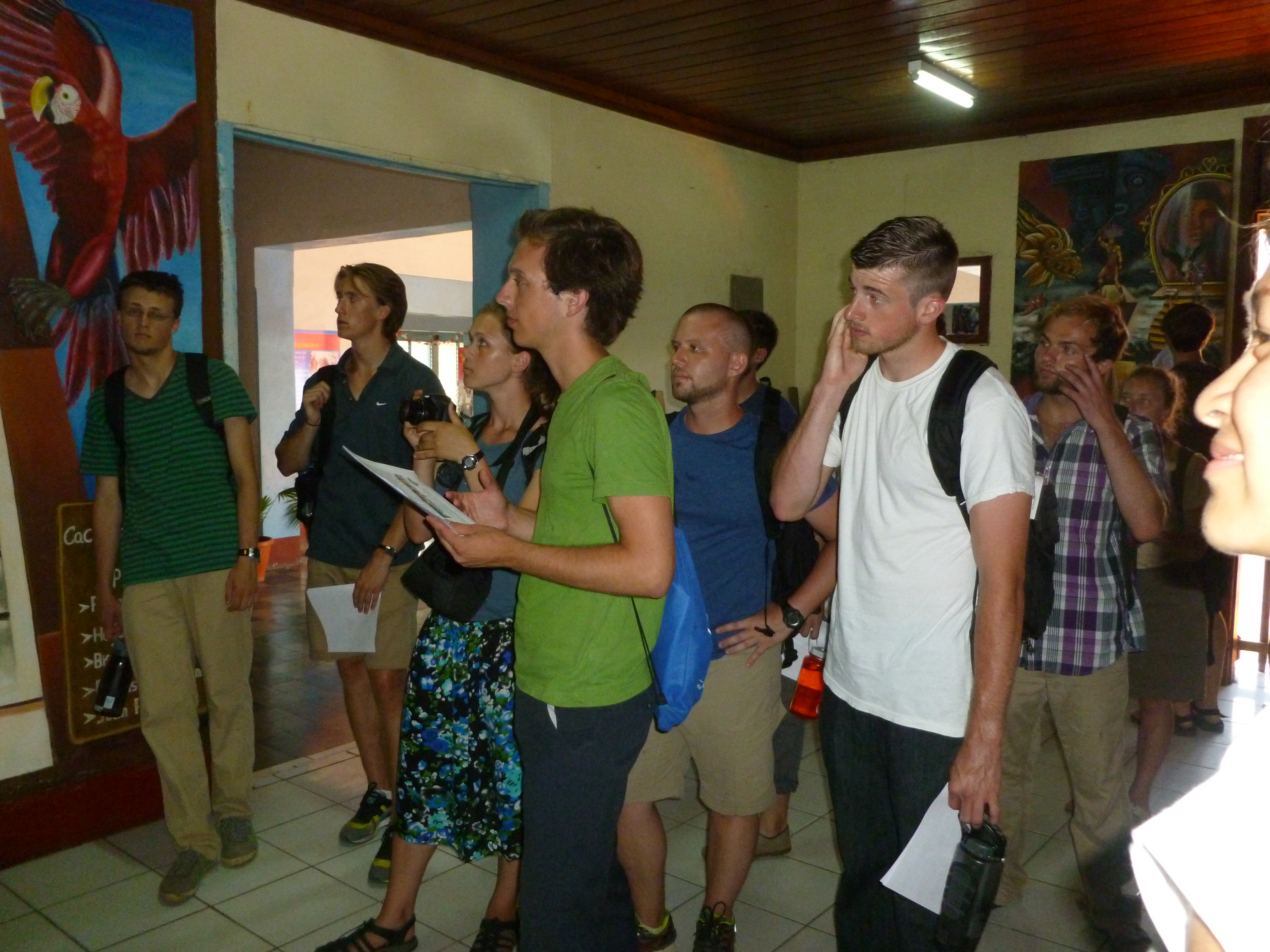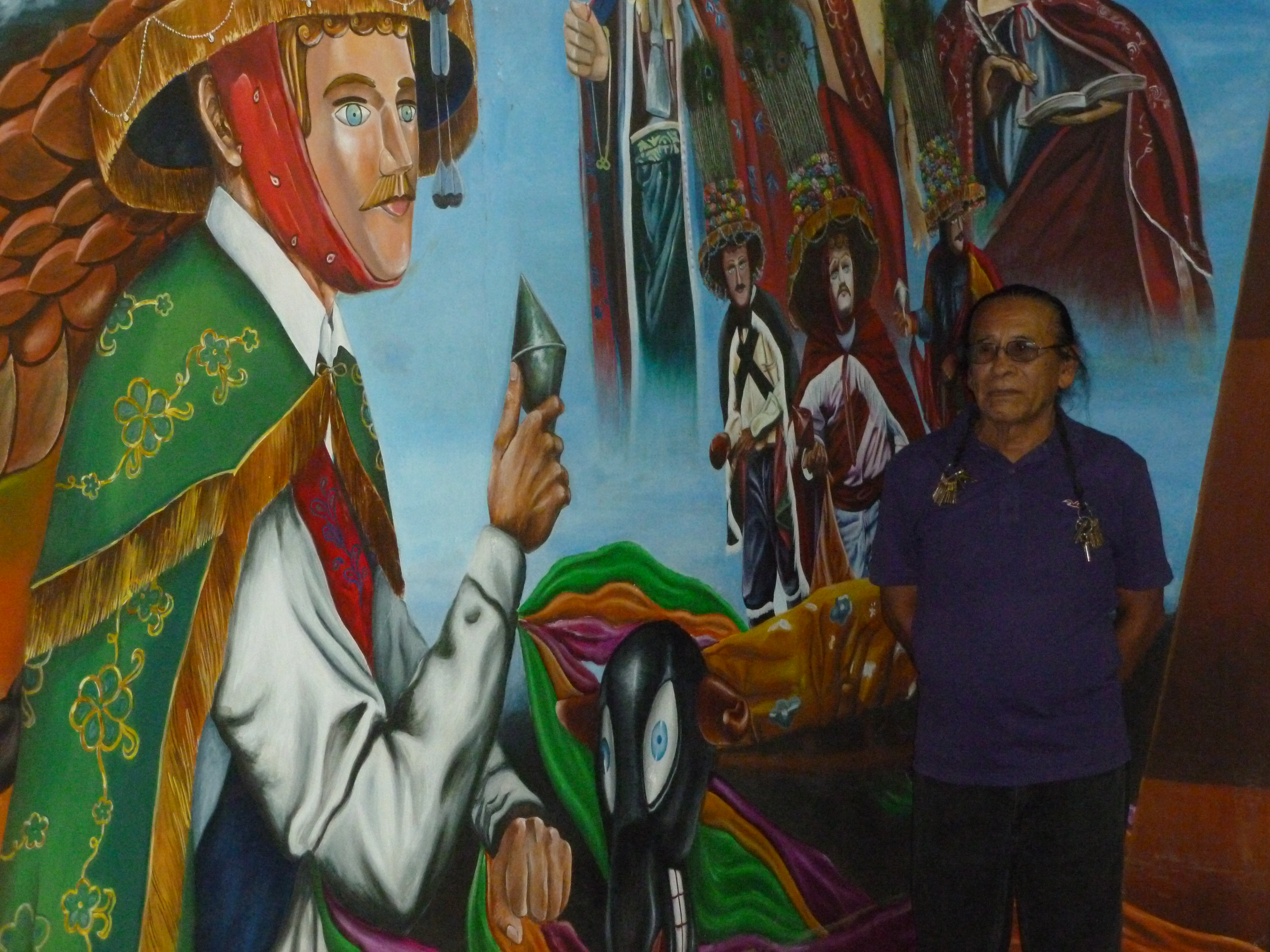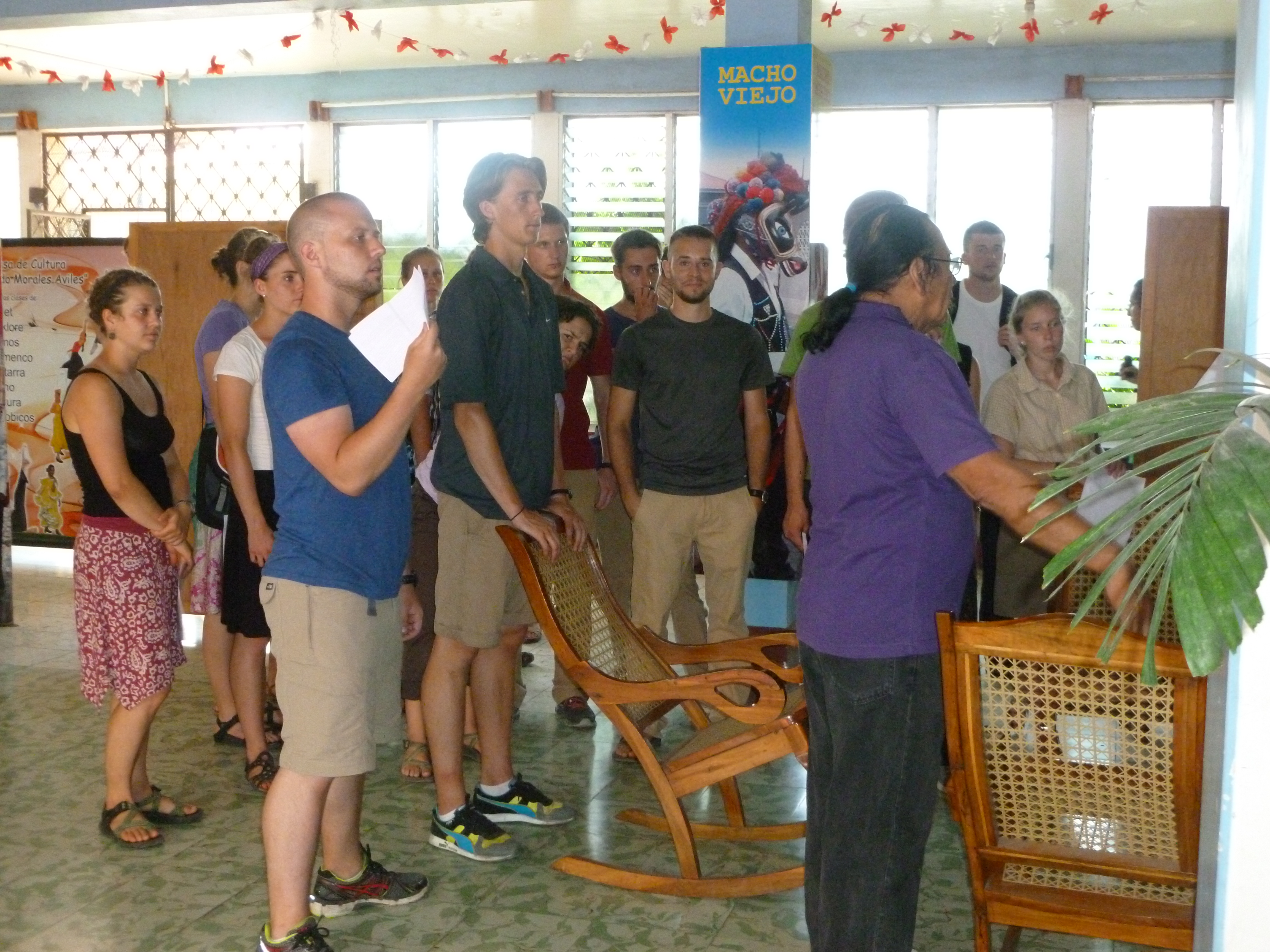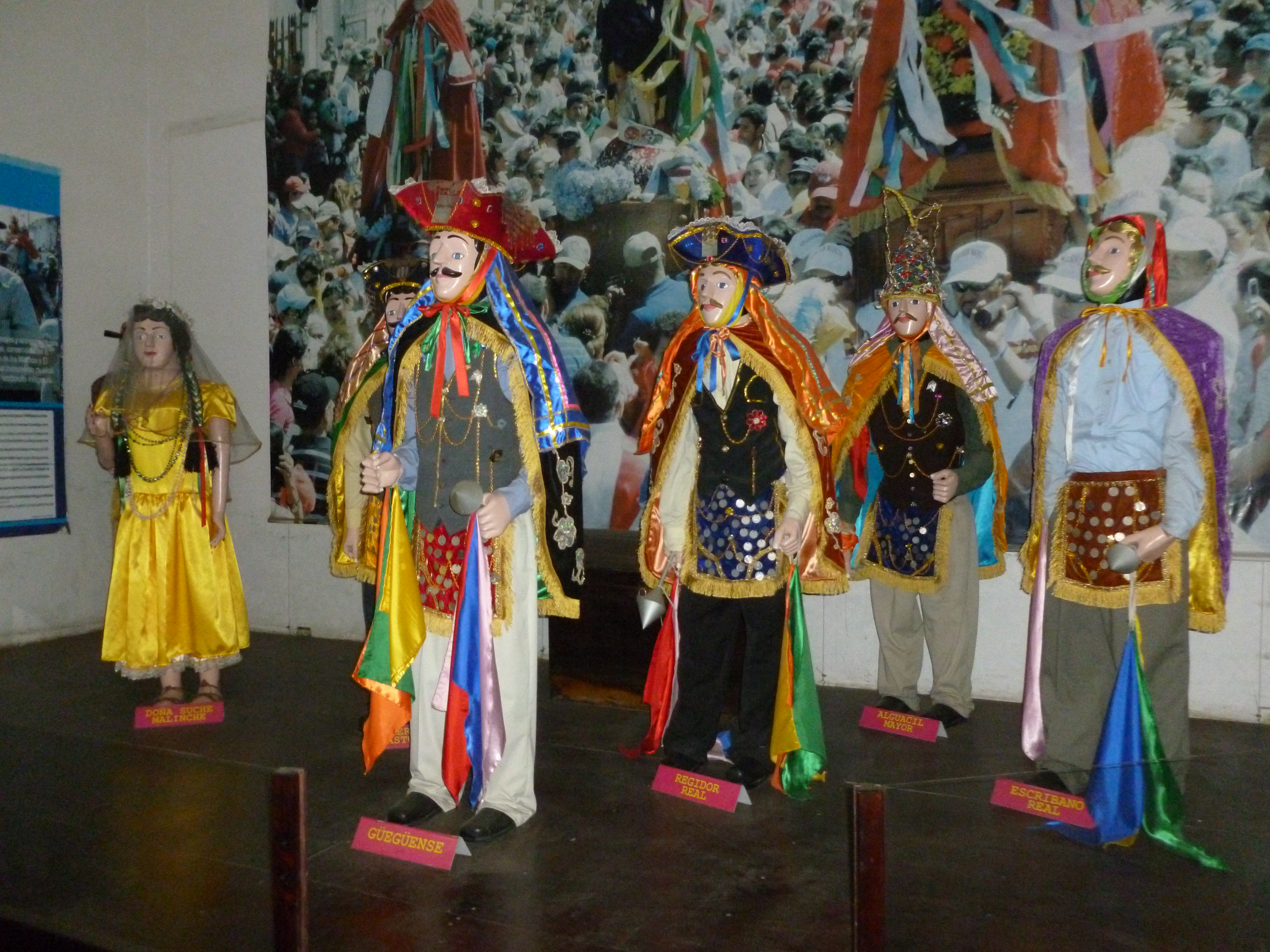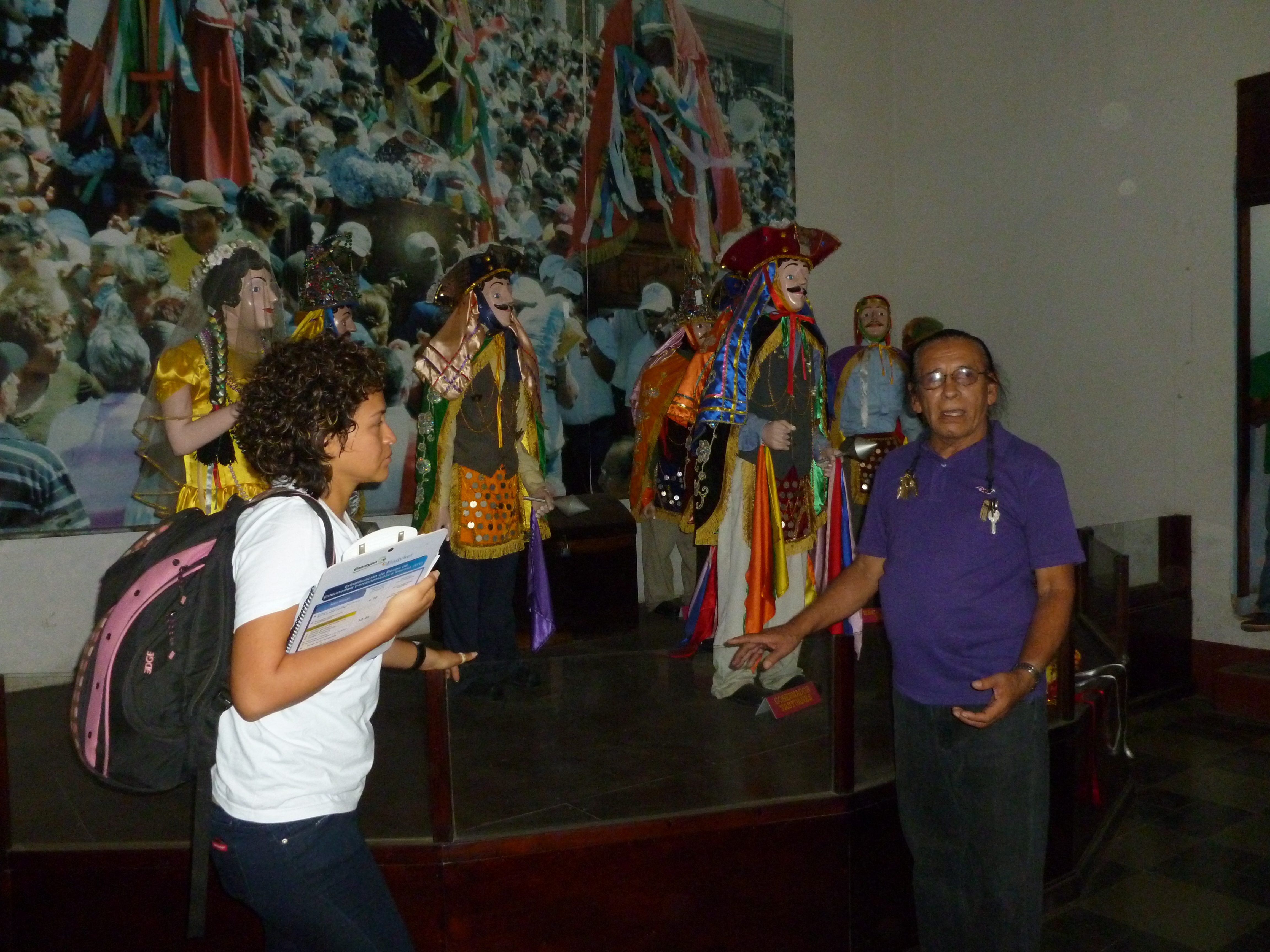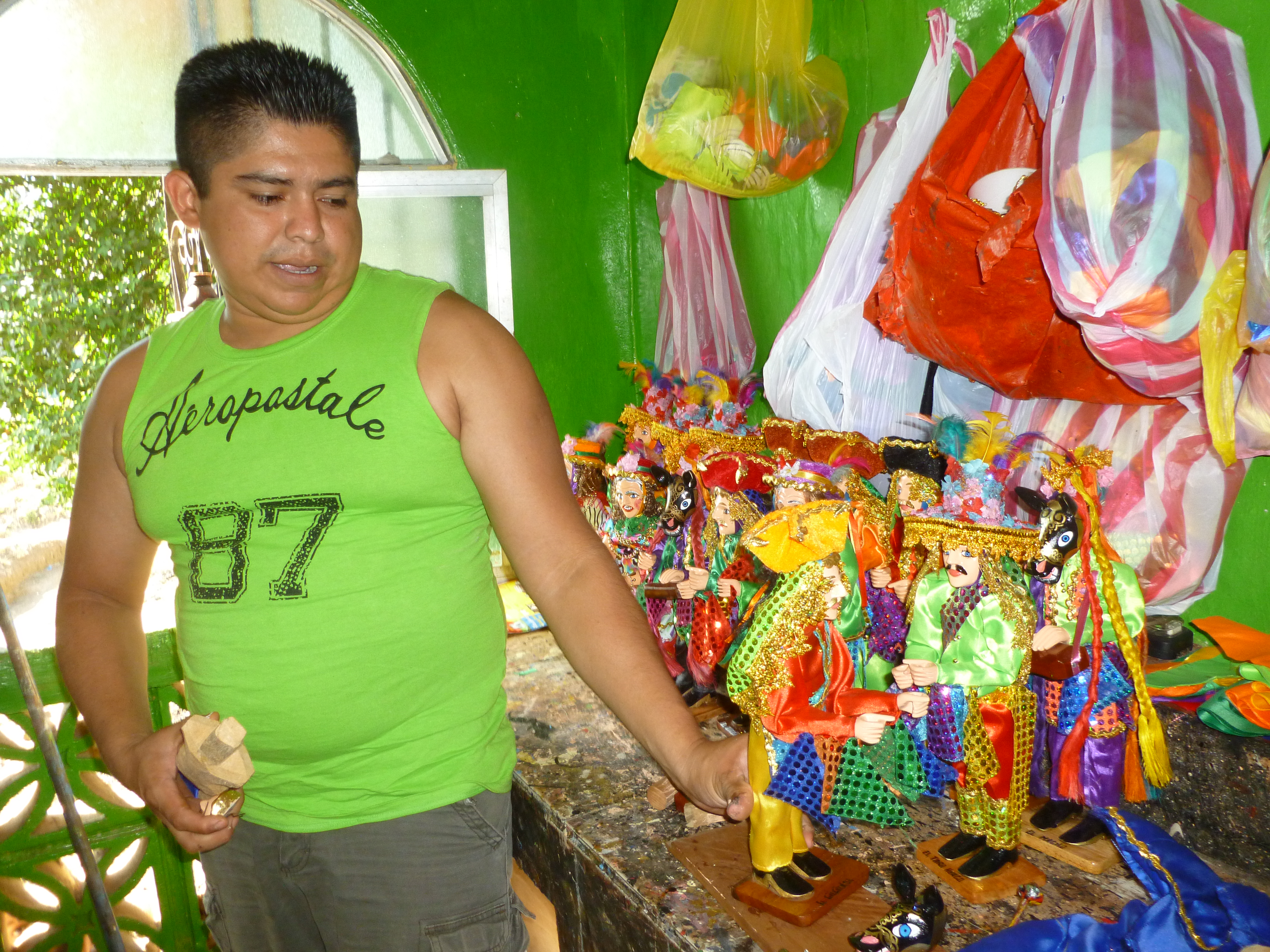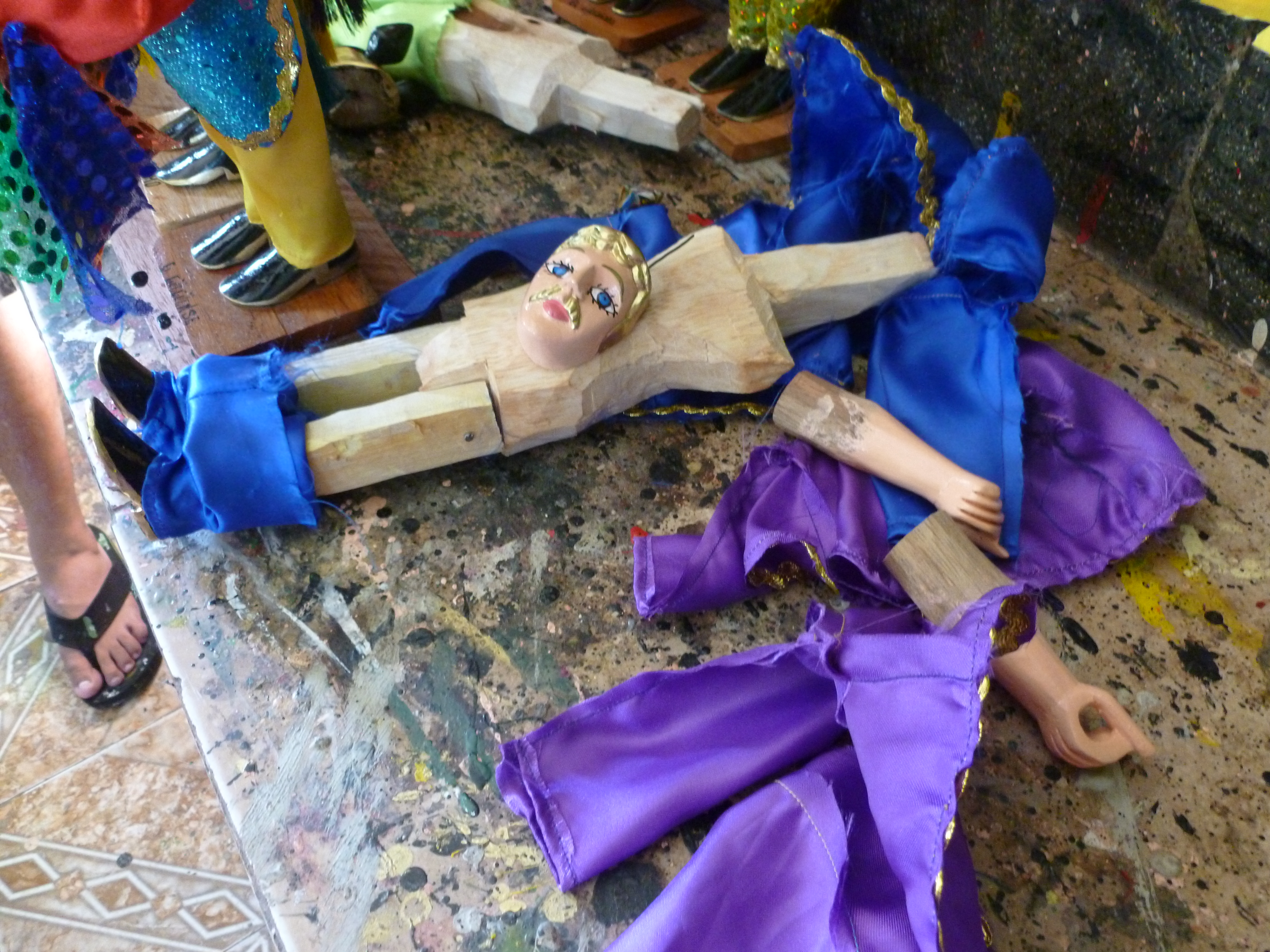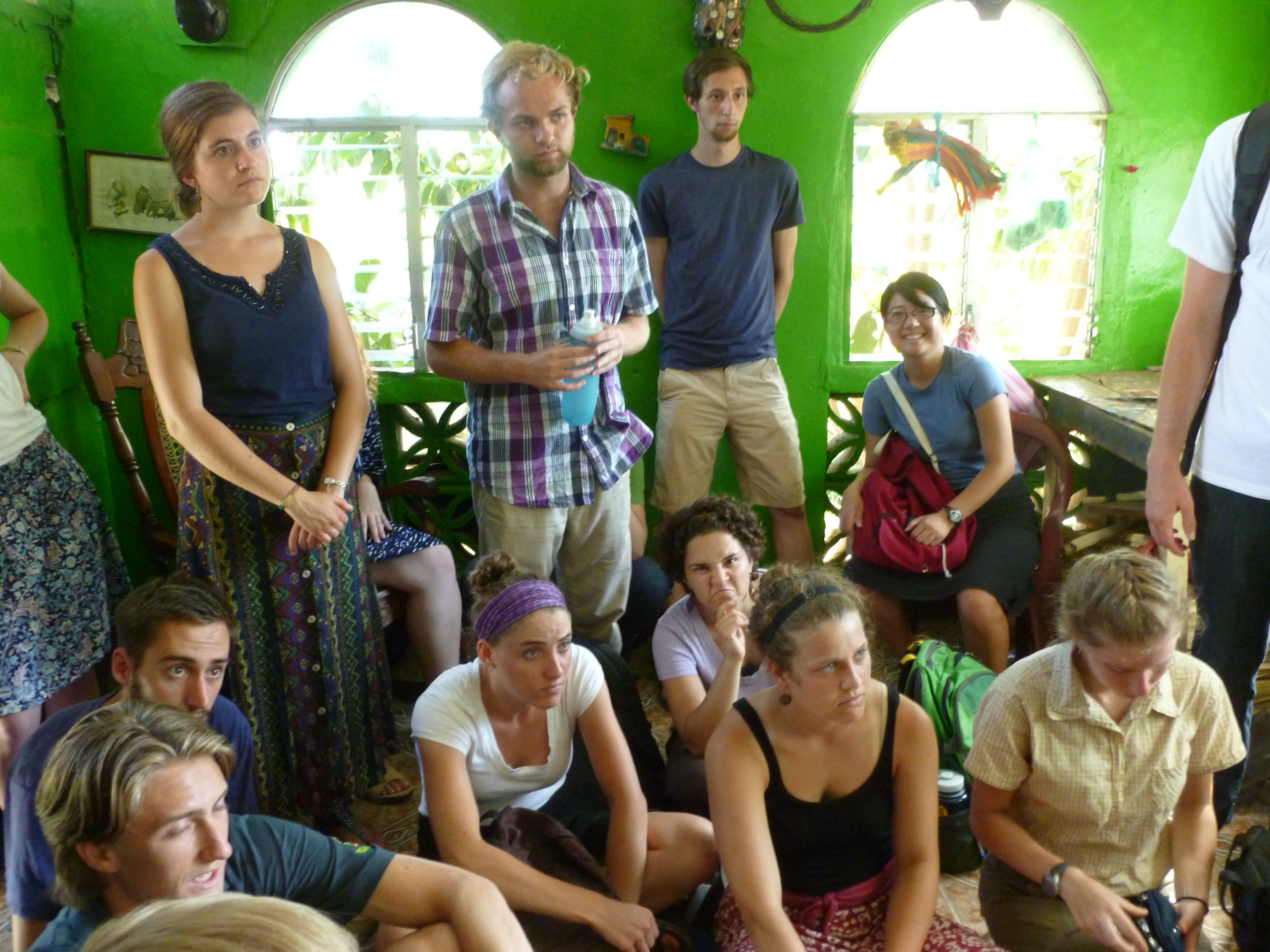Experiential Learning, Part 2: Nicaraguan Folklore
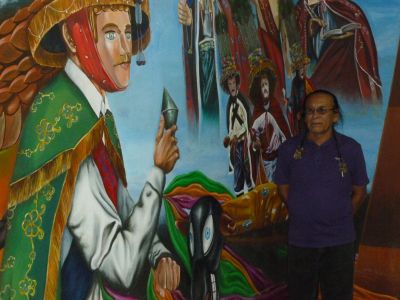
For our next trip the students learned a bit about the various folk and cultural traditions unique to Diriamba by visiting la Casa de Cultura (The Culture House) and a local Güegüense doll maker. The tour at la Casa De Cultura started with a detailed description of the mural room created by four local teens. The mural project was a way of providing the teens with an outlet for the difficult lives they were living, and the images depicted the various Gods and how local saints became a part of the Nicaraguan and Diriamba culture. Also featured was the Güegüense, a social satire in musical form with its origins in Diriamba. It was written in Nahuatl, one of the indigenous languages present when the Spanish conquistadores first came to Nicaragua, and the author is unknown. In this comic ballet, masked dancers depict the indigenous people’s first impressions of the Spaniards and their resistance to foreign rulers.
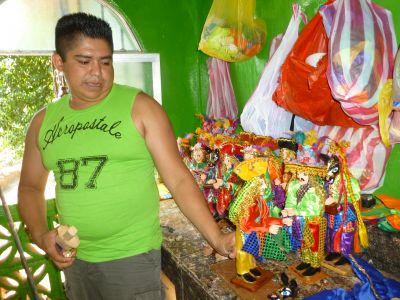
From there the group walked to the house of an artist who specializes in making Güegüense dolls. For over 40 years the artist – along with his grandfather, father and a brother – has been making these bright, vibrant figures of the characters in the Güegüense. Each doll is hand-carved from wood that has been slowly dried over a fire and then is finely painted to match the various masks of the dancers. The clothing and costumes of each doll are also handmade, and each doll takes about a day to complete. The dolls are then sold at markets in Managua, Masaya, and elsewhere. Since this is the only family who makes these particular dolls, any seen at markets would have come from this small, family owned-shop in Diriamba, the birthplace of El Güegüense.
More “Experiential Learning” is on the way…






